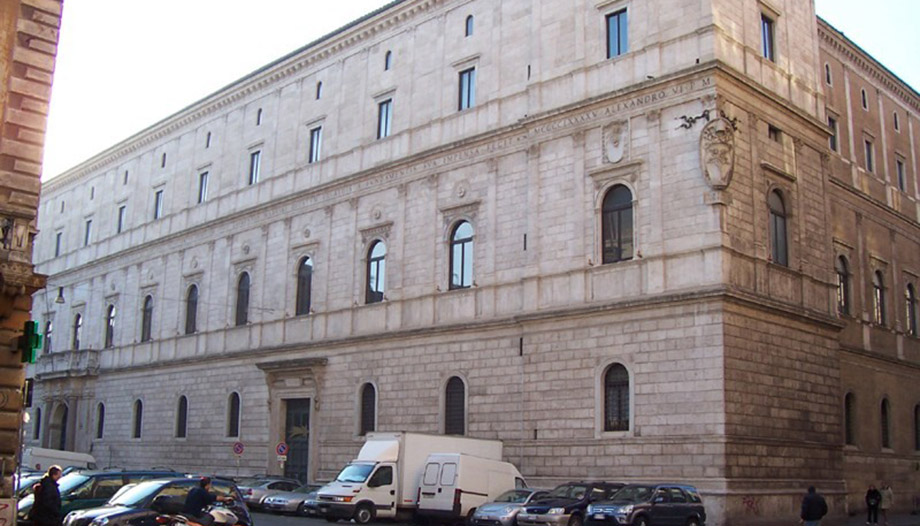The Chancellery Palace is one of the architectural jewels of the Italian Renaissance. Unlike other palaces in the Eternal City, which were modified in the style that characterized the sixteenth century, this building was the first to be built 'ex novo' in Renaissance style and is one of the most beautiful in Rome.
The construction of this palace is not without something Cyclopean: to make it, it was necessary to dismantle and move about 30 meters away the ancient basilica of "San Lorenzo in Damaso", today included within the complex; its foundations in that then marshy area took advantage of the bases of existing Roman buildings and although other new foundations were necessary; and the marble columns of the courtyard - taken from the Baths of Caracalla - "turned from fluted to smooth thanks to the work of the craftsmen," explained the architect Claudia Conforti who presided over the visit.
In the Apostolic Chancellery, which today also houses the tribunals of the Holy See - the Roman Rota, the Apostolic Signatura and the Penitentiary- was opened to the press by the Administration of the Patrimony of the Apostolic See (APSA) on September 13, 2023, on the occasion of the presentation of a documentary on the restoration of the architectural complex.
Nunzio Galantino, pointed out this initiative as a response "to the invitation to transparency from the APSA administration"He also recalled that 60 percent of the 1.5 million square meters of the Vatican's patrimony does not yield economic returns and stressed that "good administration also means distributing beauty, culture and transmitting history. He also recalled that 60 percent of the 1.5 million square meters of the Vatican's patrimony does not yield economic returns and stressed that "good administration also means distributing beauty, culture and transmitting history".
Inside, on the second floor, there is one of the most extraordinary spaces of the building: the Vasari Room or of the 100 days, because it was made in just over three months by the artist Giorgio Vasari, surrounded by frescoes with depth effects (3D) that make the visitor have the feeling that you can enter inside them.
Claudia Conforti, professor of architectural history, did not hesitate to define these paintings as "a colossal propaganda machine" in which "each painting is a theatrical scene" at a time when not everyone knew how to read or write, and which immortalizes moments such as the summit in Nice in 1538 between Pope Paul III, Francis of Valois and Emperor Charles V.
Before it, we pass through the Sala Regia, of enormous dimensions and with paintings made in the early eighteenth century, during the pontificate of Clement XI, taking advantage of the cartons used as models for various gobelins that are currently in the Vatican.
The imposing palace with its travertine marble facade was built on the initiative of Cardinal Raffaele Riario, passionate about Imperial Rome and nephew of Sixtus IV, on the site of what was the oldest parish church in Rome and where there was a building from the fourth century, from the time of Pope Damasus.
"The influence of Bramante -genius Renaissance architect- is clear in the structure, although it was never documented, as well as the use of the so-called 'golden ratio' in the design, sizes and symmetry," explained engineer Mauro Tomassini
In the hypogeum or subway, there is a tomb of the consul Aulio Irzio, submerged in the water of an artificial channel still visible, made in Roman times to make the water flow from the baths of Agrippa to the Tiber River.
The Palazzo della Cancelleria, one of the most beautiful monuments in Rome, a stone's throw from Campo De' Fiori, is normally closed to the public, but inside there is an exhibition on Leonardo Da Vinci and his inventions, which allows you to enter the monumental cloister of the Palazzo della Cancelleria and part of its subway.








